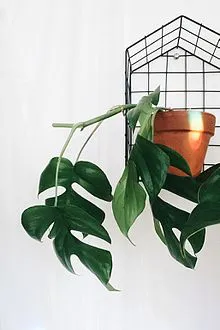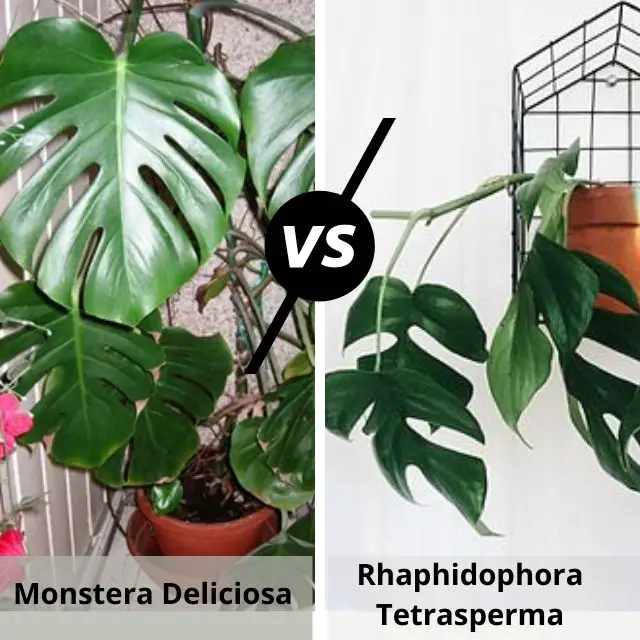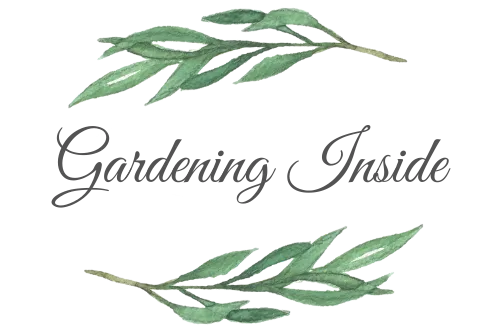Most people get confused, especially in differentiating Rhaphidophora Tetrasperma vs Monstera Deliciosa. Some of those people find these plants identical, while others find them differentiating. The look of both these plants is identical, which means that they are not easy to differentiate.
Both these plants are from cousin families and have the same family, order, and class, but the genus is different. However, you must not worry if you think these plants like the same. This guide will provide you with an overview of the characteristic differences of these plants. It will also prevent you from buying the wrong plant for your place.
Overview of the Monstera Deliciosa
It is one of the climbing native plants found in Southern Mexico, but it can also be found in tropical climates like Hawaii. Another name of this plant is the “swiss chess plant” due to the iconic and heart-shaped leaves.
The family of the plant is Arcaea which is the same as that of Rhadiphora Tetrasperma. The entire plant is poisonous, and if one eats the food before ripening, it can cause moth irritation.

Facts about Monstera:
- These plants need a lot of space to grow, so one must choose the location accordingly.
- These can either grow in trees or the plants in the rainforest. So, one can grow these indoors as well.
- The ideal growth of the Monstera Deliciosa is in between the sun and the shade because too much sun can result in the damaging of the leaves.
Overview of the Rhaphidophora Tetrasperma
These plants mostly find out in tropical climates, like Southern Thailand, Malaysia, Hawaii and America, and are known to be “love trees” due to their heart-shaped leaves. These plants grow best in the diffused bright light and require 40% of the humidity. The fruit of the plant is not edible and has smaller leaves.
Proper care of this plant can help the plant grow fast, and it usually prefers to grow in moist conditions. However, in some ways, these plants are similar to Monstera.

Facts about Rhaphidophora Tetrasperma:
- The soil for the perfect growth of this plant must be moist but well-drained.
- The soil must not be wet, as overwatering can lead to cause stunt growth of the plant.
- Humidifiers can be kept in the area around to make sure perfect growth of it.
- The plant is not resistant to harsh fertilizers due to which neem oil or mild fertilizers with being.
Comparison of the properties of Rhaphidophora Tetrasperma vs Monstera Deliciosa
| Rhaphidophora Tetrasperma | Monstera Deliciosa |
| The plant is not relatively big, but the growth is fast (if the plant is provided with the optimum growth conditions). | This plant is relatively big, and it shows slow growth. |
| It requires more frequent repotting due to the fast-growing features of the plant. | It does not require repotting due to its slow growth. |
| Fertilizer is not the demand of this plant and grows well even without fertilizer. | The plant requires a balanced liquid fertilizer for better growth. |
| The average growth of the plant can reach 12 feet. | The average growth of this plant is between 10 to 15 feet tall, while the leaves can reach 18 inches in length. |
| This plant is not edible. | It is showy and edible. |
Why people get confused about both these plants?
The main difference between Rhaphidophora Tetrasperma and Monstera Deliciosa both these plants is the “Split-Leaf Philodendron”, as it is concerned with both the Monsteras and the true-split Philodendrons. This confusion also let the nurseries to interchange the names of these plants.
Most people think that Monstera Deliciosa is of the same type as Philodendron, but the fact is that these two have different genus.
Another primary reason behind the confusion of these plants is the similarity in the shape, split leaves, and are usually native to the same plants. These plants’ member species are also the same, having vine, spadix, and spathe flowers.

Significant differences between the Monsteras vs Philodendrons
- One of the significant difference between both these plants is due to a different genus. The different genus makes these plants entirely different, and they cannot cross-pollinate as well. This means that they cannot make new plant hybrids.
- A physical difference between these plants is that the split-leaf of the Philodendrons do not have fenestration, while the Monstera is fenestrated.
- These plants are also different growth-wise, as Philodendrons cannot climb to the walls, but Monstera can do so.
- One of the specialities of the Monstera plant is the huge aerial leaves and can easily cling to the trees, but Philodendrons cannot do so.
- Philodendrons cannot produce fruit, while Monsteras produce fruits.
- The leaves of the Monstera plant are not protected by any sheath, but Philodendron is protected by cataphyll.
They are also different in the leaf texture, like the leaves of Monstera plant are smoother and smooth, but Philodendron leaves are unsettled.
Taxonomical Classification:
The differences in these plants are also evident by the taxonomical classification. The table given below provides a brief overview of these plants:
| Plant Name: | Rhaphidophora Tetrasperma | Monstera Deliciosa |
| Order Name: | Mini Monstera | Swiss cheese plant |
| Kingdom: | Plantae | Plantae |
| Subkingdom: | Embryophyta | Viridiplantae |
| Class: | Liliopsida | Magnoliopsida |
| Order: | Arales | Alismatales |
| Family; | Araceae (Juss) | Araceae (Arums) |
| Genus: | Rhaphidophora | Monstera Adans |
The above table indicates that these plants are not similar to each other and are different due to family differences.
Price Differences:
If one is willing to grow these plants in the household, then he/she must be aware of the price differences. The comparison of the price indicates that Monstera is expensive in comparison to Rhaphidophora.
On average, the Monstera Deliciosa is between $20 to $40, while the price of the Mini Monstera plant (Rhaphidophora) is between $5 to $20. The factors on which the price of these plants depends include the location, size of the plant, and variegation.
Growth and care of these Plants:
Both of these plants are different in their needs, and the growth depends on fulfilling these requirements.
As dictated above, Rhaphidophora grows fast compared to Monstera, which means that the latter requires more care, and these plants require occasional watering.
Overwatering can cause root rot between these plants, so they must be provided with consistent water.
Check Philodendron vs Pothos: Difference between Pothos and Philodendron
Similarities in between Rhaphidophora Tetrasperma and Monstera Deliciosa:
- Along with the differences, both these plants have some similarities as well. Both these plants find their history in warm regions, which means that they require sunlight. But the sunlight must not be direct, as they grow better in the diffused bright light. Installing a shade near the window will help.
- Both these plants take assistance from the aerial roots and are moisture-loving. This moisture helps the plants to drain well.
- Common pest is the spider mites or thrips.
- Humidity is between 40% to 50%.
Temperature Requirements of these Plants:
The temperature requirements of both these plants are exact and grow best in between 55 to 85 degrees Fahrenheit.
However, if you are willing to grow these plants in-home temperature, they can also adapt to the given temperature range.
Conclusion:
On a concluding note, although these points are the same in structural appearance, still they are different due to different genus. The significant differences between these plants include taxonomy, leaf shape, growth, habit, fertilizer, usage, and growth requirements.
Therefore, although they have some similarities, they cannot be considered the same plants. Reading the article will help you know the reasons why these plants are considered different.
Also, Check How Fast Does Aloe Vera Grows?
Frequently Asked Questions about Rhaphidophora Tetrasperma vs Monstera Deliciosa
Is Philodendron Monstera the same as Monstera deliciosa?
No, these two plants are not identical due to the different genus. Instead, these plants have different properties, due to which they grow differently. For example, Monstera Deliciosa is named due to the delicious fruit, while Philodendron does not produce any fruit and is known to be a “love tree”.
Do I have a monstera or a philodendron?
You can differentiate in these plants by seeing the factor of fenestration. For example, Monstera is fenestrated, while the split-leaf philodendrons are not. Fenestration is defined to be the holes that are present in between the leaves of the plants.
Is a Monstera Deliciosa similar to a split-leaf Philodendron?
These plants have different genus, but they also have similar aspects, which cannot be ignored. Some of the critical similarities within these plants include requirements of sunlight, soil, temperature, humidity, common pests by which they can be attacked, toxicity, pruning, and propagation.
Is Monstera deliciosa toxic to dogs?
Yes, this plant is toxic to both cats and dogs, while it can have mild toxic impacts on human beings. The symptoms include oral irritation, pain, vomiting, excessive dwelling, difficulty swallowing, and swelling of the mouth, tongue, and lips.
How much light do a monstera and Philodendron need?
Both of these plants have similar light requirements and can grow well in indirect sunlight. However, continuous exposure to direct sunlight can cause root rot and the yellowing of the leaves. Thus, it impacts the look of the entire plant as well and results in stunted growth.
